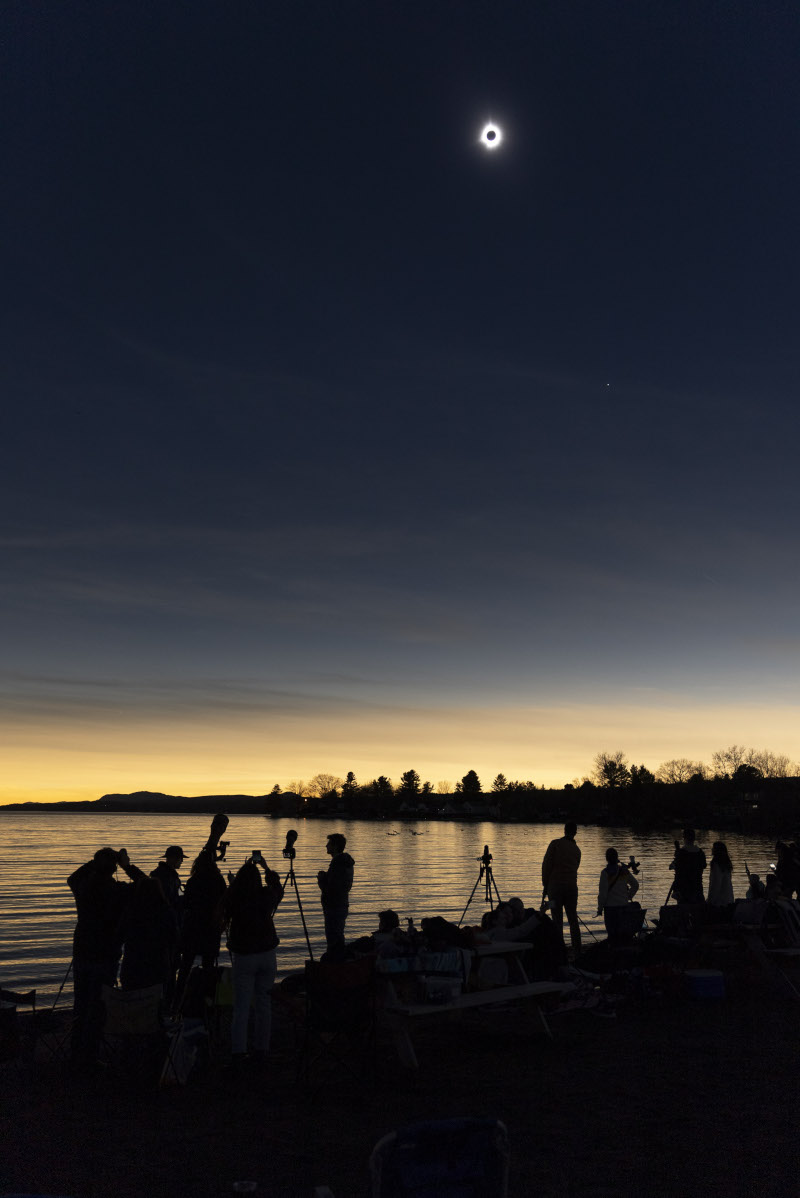
Nombre total de pages vues
11/04/2024
SANTé/MEDECINE - La compléxité de la tête humaine

SANTé/MEDECINE - HISTOIRE - 1924 : Einthoven et l'électrocardiographe

ASTRONOMY - Eclipse in Seven
2024 April 11
Image Credit & Copyright: Xiaofeng Tan
Explanation: Start at the upper left above and you can follow the progress of April 8's total eclipse of the Sun in seven sharp, separate exposures. The image sequence was recorded with a telescope and camera located within the narrow path of totality as the Moon's shadow swept across Newport, Vermont, USA. At center is a spectacular view of the solar corona. The tenuous outer atmosphere of the Sun is only easily visible to the eye in clear dark skies during the total eclipse phase. Seen from Newport, the total phase for this solar eclipse lasted about 3 minutes and 26 seconds.
10/04/2024
SANTé/MEDECINE - HISTOIRE - 1906 : découverte de la maladie d'Alzheimer

SANTé/MEDECINE - Le fonctionnement de l'oeil humain - Mouvements de l'œil et nerf optique

ASTRONOMY - Planets Around a Total Eclipse
2024 April 10
Image Credit: Stéphane Vetter (Nuits sacrées)
Explanation: What wonders appear when the Moon blocks the Sun? For many eager observers of Monday’s total eclipse of the Sun, the suddenly dark sky included the expected corona and two (perhaps surprise) planets: Venus and Jupiter. Normally, in recent days, Venus is visible only in the morning when the Sun and Jupiter are below the horizon, while Jupiter appears bright only in the evening. On Monday, though, for well-placed observers, both planets became easily visible during the day right in line with the totally eclipsed Sun. This line was captured Monday afternoon in the featured image from Mount Nebo, Arkansas, USA, along with a line of curious observers — and a picturesque tree.
09/04/2024
INVENTEURS TUéS PAR LEURS CREATIONS - Marie Curie

SANTé/MEDECINE - HISTOIRE - 1896 : invention du tensiomètre par Rocci

SANTé/MEDECINE - Le fonctionnement de l'oeil humain - Le fond de l'oeil

ASTRONOMY - Moon's Shadow over Lake Magog
2024 April 9
Image Credit & Copyright: Stan Honda
Explanation: Captured in this snapshot, the shadow of the Moon came to Lake Magog, Quebec, North America, planet Earth on April 8. For the lakeside eclipse chasers, the much anticipated total solar eclipse was a spectacle to behold in briefly dark, but clear skies. Of course Lake Magog was one of the last places to be visited by the Moon's shadow. The narrow path of totality for the 2024 total solar eclipse swept from Mexico's Pacific Coast north and eastward through the US and Canada. But a partial eclipse was visible across the entire North American continent.
SANTé/MEDECINE - CANCER - 12 AVANCEES REVOLUTIONNAIRES - 7. Des biopsies liquides et synthétiques moins invasives et plus rapides
Les biopsies classiques nécessitent le prélèvement de tissu, souvent par chirurgie. Aujourd’hui, la biopsie liquide offre une alternative pl...

-
2022 September 26 All the Water on Planet Earth Illustration Credit: Jack Cook, Adam Nieman, Woods Hole Oceanographic Institution ; Data ...
-
2025 May 11 The Surface of Venus from Venera 14 Image Credit: Soviet Planetary Exploration Program , Venera 14 ; Processing & Copyri...


